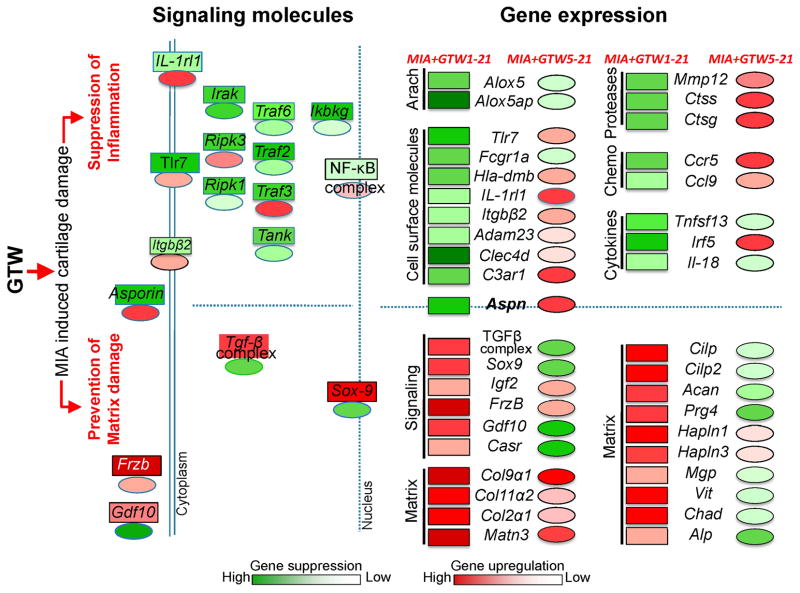Figure 5.
Schematic showing the molecular basis of the protective effects of GTW on MIA-induced cartilage damage. GTW preserves cartilage integrity by preventing MIA-induced inflammation and matrix loss in MIA+GTW1-21 (rectangles) to a greater extent than in MIA+GTW5-21 (ovals), where GTW was applied following Grade 1 cartilage damage. These differential effects stem from the ability of GTW to suppress (green) MIA-induced NF-κB signaling molecules in MIA+GTW1-21, as compared to minimal suppression or upregulation (red) of these molecules in MIA+GTW5-21. This in turn may suppress several proinflammatory genes [arachidonate metabolites (Arach), receptors, proteases, chemokines (Chemo) and cytokines] in MIA+GTW1-21, but to a lesser degree in MIA+GTW5-21. Importantly, Aspn, an inhibitor of TGF-β that is upregulated in MIA21, is significantly suppressed by GTW in MIA+GTW1-21. By suppressing Asporin expression, GTW may upregulate TGF-β complex and SOX-9 in MIA+GTW1-21, required for synthesis of matrix proteins. Simultaneous upregulation of Frizzled-related protein (Frzb) likely inhibit chondrocyte hypertrophy and mineralization (50). Contrarily, the lack of Asporin suppression and thus failure of the expression of the molecules in TGF-β complex and Sox-9 in MIA+GTW5-21 may prevent MIA-induced matrix loss to a lesser extent, as evidenced by the suppression of several molecules required for matrix assembly.

